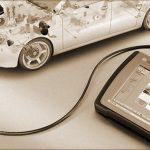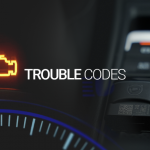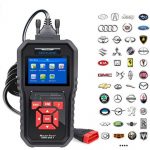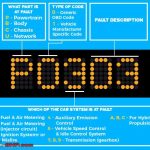
The check engine light on a Ford vehicle can mean several things. In this article we’ll discuss the most common causes and diagnosis, as well as what to do if you notice that the check engine light is on. This article will also cover some of the common symptoms and the estimated costs of repairs. Before you head out to your nearest repair shop, however, it’s important to know what to look for in the check engine light.
Common causes of check engine light on in Ford models
If you have noticed your Ford’s check engine light has come on, you should not ignore it! The check engine light can mean anything from a blown spark plug to a gas cap issue. While these things may be less serious than a blown spark plug, ignoring the warning light is never a good idea. Doing so can damage your car and even cause it to fail emissions tests.
Depending on your model, a loose gas cap may be a common cause of your Ford check engine light. A loose gas cap can cause the light to come on, and it will need to be tightened. You should also check the gas cap for loose gas caps, as some models don’t have them. If you do notice that your gas cap is loose, it may be due to a gas leak.
Luckily, the Check Engine light will turn off after you fix the problem. However, the light may stay on for a while if the problem isn’t fixed immediately. You should get your car diagnosed by a professional before you try to fix it yourself. The light may be harmless and just a simple problem, but it’s worth paying a few extra dollars to fix it the right way.
If you notice that the check engine light comes on, there are many possible causes for it. It could be a gas cap issue or a bad spark plug, but it’s always worth getting your car checked by a mechanic to rule out other potential problems. Fortunately, there are some common fixes you can do yourself. In some cases, the problem may be as simple as a loose gas cap. You may also have a faulty catalytic converter, which requires professional assistance.
Common diagnoses
If you notice that your car’s OBD (On-Board Diagnostics) system is emitting a series of error codes, you should get your vehicle checked by an auto mechanic. Ford engine fault codes come in five letter formats and help you determine the root cause of the problem. For instance, the P0442 code is an indication that your evaporative emissions system may be leaking. Modern vehicles can emit hundreds of different DTCs.
There are a number of reasons why this code appears on your car’s dash. The first is because it means the vehicle’s EVAP system is malfunctioning. This causes the vehicle to emit harmful gases into the atmosphere. The second is because it affects fuel efficiency and emissions. Fortunately, this problem is relatively easy to solve. If you follow the steps outlined above, you can safely drive your Ford vehicle again and prevent costly repairs.
One of the most common causes of engine problems is an abnormal amount of fuel. If you have a P0173 code, then you should get your car checked out by an auto mechanic. This code means that the air-fuel ratio is too rich or too lean. Having too much air in the engine can cause an over or under-compensation. An error code indicating an over or under-reporting mass air flow sensor is a sign of this problem.
Another reason for the check engine light to be on is a malfunctioning oxygen sensor. Oxygen sensors are located on the catalytic converter. If they fail, the check engine light will illuminate and your car will run poorly. You may also notice a decrease in fuel economy. Similarly, a defective VCT solenoid can cause a check engine light to illuminate. If you notice any of these symptoms, it’s likely the issue is with the VCT.
Some of the most common engine fault codes in a Ford can be categorized as “powertrain” or “body” in order to pinpoint the underlying problem. If you see the P0xxx code, this indicates an issue with the engine’s powertrain. It can also mean that your car’s air or fuel-metering system is having trouble. If you’re unsure, contact your mechanic and have them check it for you.
Symptoms
Some Ford vehicles display a warning light on the dashboard called a “fault code.” Although some owners show concern when these lights come on, others will just ignore them. If left unchecked, the fault code may lead to costly repairs and damage. Here are some of the more common symptoms of Ford engine fault codes. These codes may indicate that something is wrong with the engine and require repair. If you see one of these warning lights on your dashboard, you should know what it means.
This light indicates a potential malfunction with the vehicle’s engine management system or another function. Diagnostic Trouble Codes (DTCs) are five-digit codes that identify a problem in the vehicle. When you connect a scanning tool to your car’s OBD system, the codes appear on the screen. The first letter indicates which system is malfunctioning. For instance, a code “P” means that a problem is present with the engine. Other “P” codes indicate problems with emission systems, transmission, or body. “B” codes are related to chassis and body problems, while “U” indicates that network communication is the culprit.
Once you’ve diagnosed the underlying problem, you can begin addressing the root cause of the malfunction. The check engine light on a Ford may be a symptom of a failing ignition coil. Spark plug boots are an important part of a properly functioning ignition coil. If the light is still on, you can check the MAF sensor, spark plugs, and the catalytic converter. However, if none of these steps solves the problem, you can purchase a diagnostic scan tool and perform the repair yourself.
Some of the most common symptoms of Ford engine fault codes are listed below. A P0300 code indicates that the engine is misfiring. The code also means that the engine is not getting enough air to run properly. A P0401 code means that the engine’s fuel/air ratio is not balanced. Dirty sensors, leaking valves, or a bad vent control valve may cause this code. If the fuel supply is not enough, this code may indicate a problem with the secondary injection system.
Cost of repairs
If your Ford has stopped running, the cost of engine repairs can be quite high. You may be wondering how much it costs to fix a Ford engine, especially if it’s a hybrid or bigger model. While average repairs cost between $2000 and $4000, the cost can vary widely, depending on the problem and the type of engine. The cost of an engine repair will depend on whether the car requires extensive repairs or simple maintenance.
The cost of Ford engine repairs can vary widely, and is highly dependent on the region you live in, and the quality of repair shops. Independent repair shops are typically less expensive than Ford dealerships, and they often offer faster turnaround. Make sure the mechanics you hire are ASE-certified, as these mechanics are more likely to provide quality workmanship. You can also find good quality independent shops near your home, which can give you the same high-quality service that you would expect from a Ford dealership.
While a Ford engine repair costs more than a car’s average, it’s worth it for the quality of service you receive. With a good warranty, you’ll enjoy peace of mind that your vehicle will be in good hands. RepairPal’s expert community answers hundreds of Ford questions every day. A Ford repair may cost up to $1,000, so it’s best to make an appointment with a shop early to avoid being surprised.
Choosing a quality mechanic is essential when considering the cost of Ford engine repairs. While it can be costly to replace a broken engine, this process will help you maintain your vehicle for many years. Regardless of whether your car is a hybrid or a full-size sedan, it’s worth considering the cost of repairs before investing in a brand-new model. You’ll save a considerable amount of money if you buy a rebuilt engine. Make sure to shop around before making the decision, though. The cost of repairs will depend on where you live and where you buy the parts from.
Another option is purchasing a third-party warranty, also called a vehicle service contract. These extend warranties cover many of the same parts that your original factory warranty would. They’ll only pay for parts that fail under normal use, but they won’t cover parts that have been modified or misused. A third-party warranty can save you hundreds of dollars in engine repair costs, especially if you’re paying out-of-pocket.






